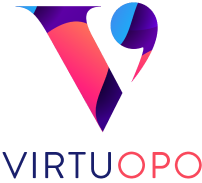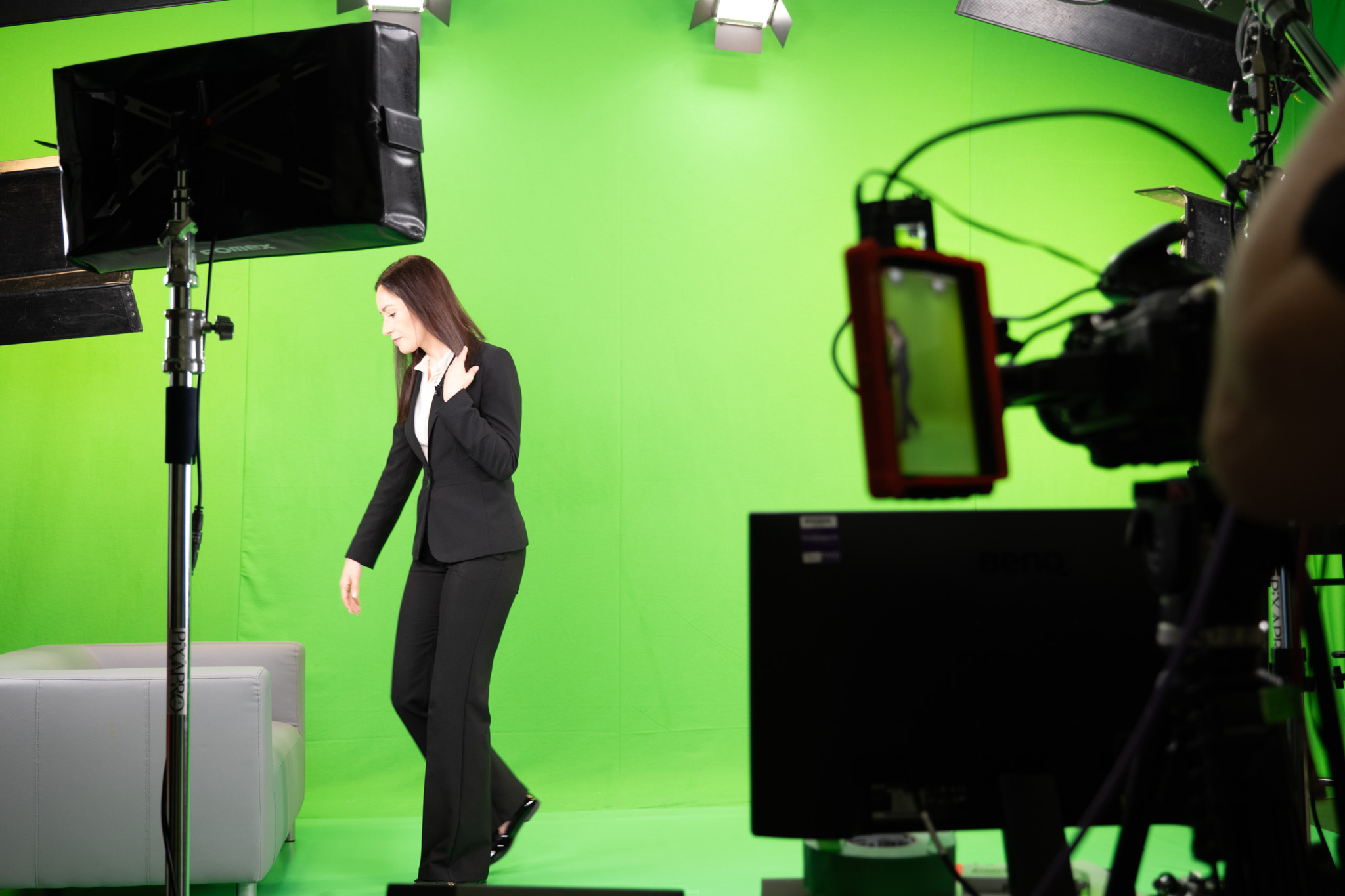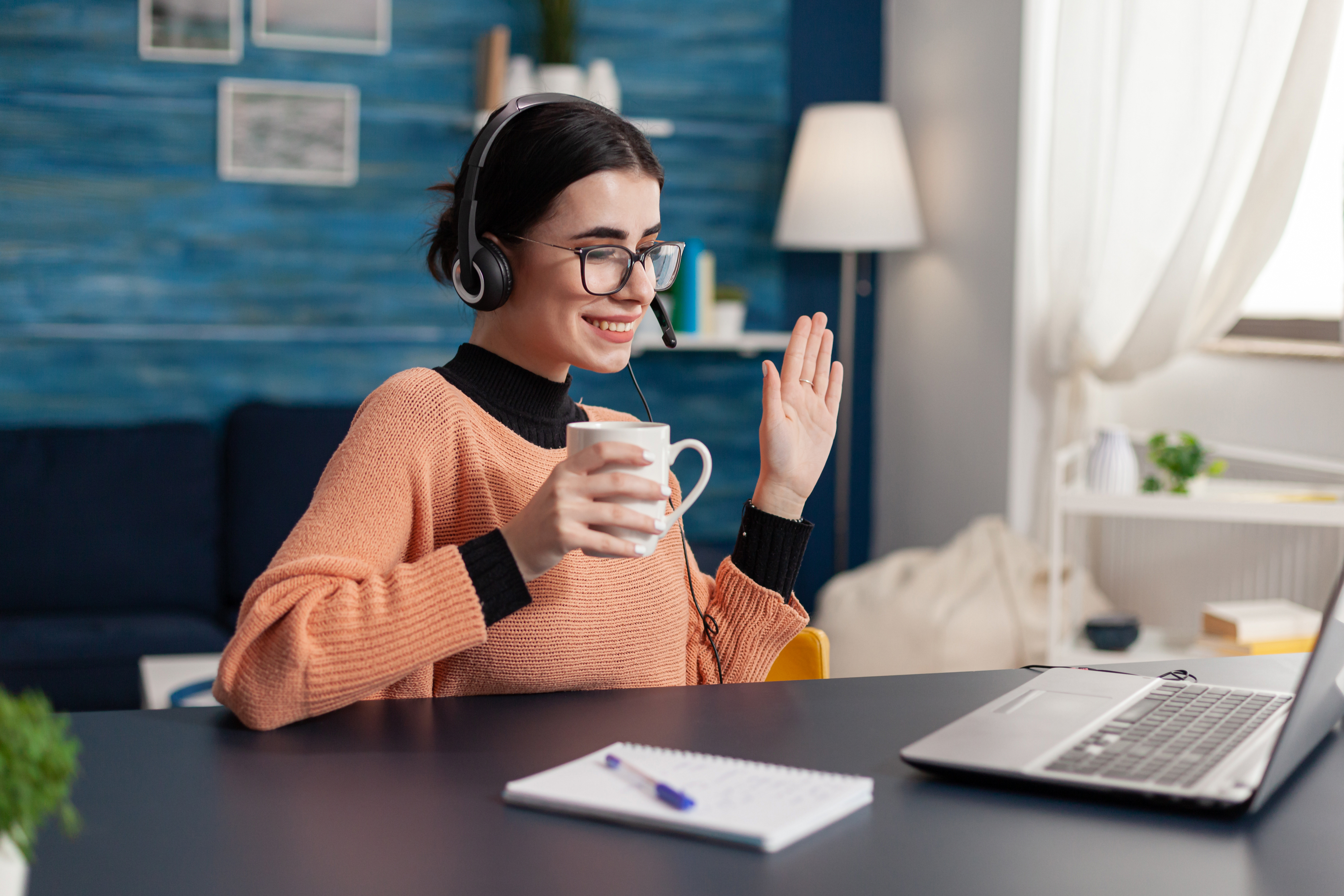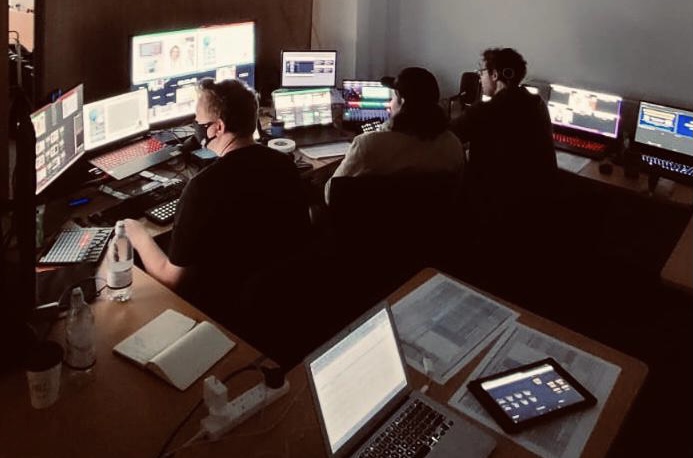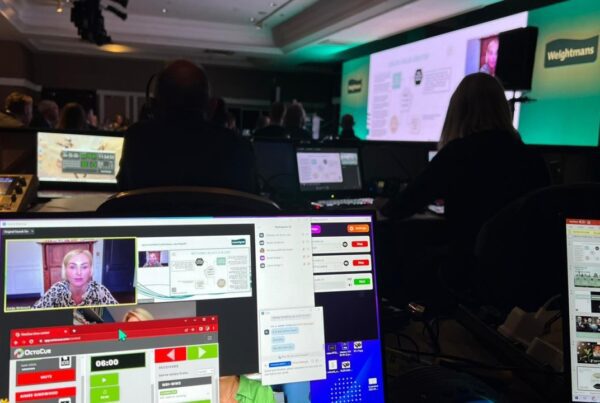Green screen production has been widely used in film and TV for decades, and in recent years, the technology has become increasingly important in the livestreaming and virtual events industry.
At Virtuopo, we regularly use green screen production to bring a high-end professional look and feel to our virtual events and livestreams. In fact, we’ve even built a dedicated virtual studio on-site at our Liverpool HQ, which allows us to get creative with any interactive elements, interesting VT and sizzling graphics, as well as TV style sets and bespoke backdrops.
If you’re keen to learn more about green screen production, read on to find out how the technology works, when it first became popular and how we use virtual reality in our work as a specialist events and livestreaming company.
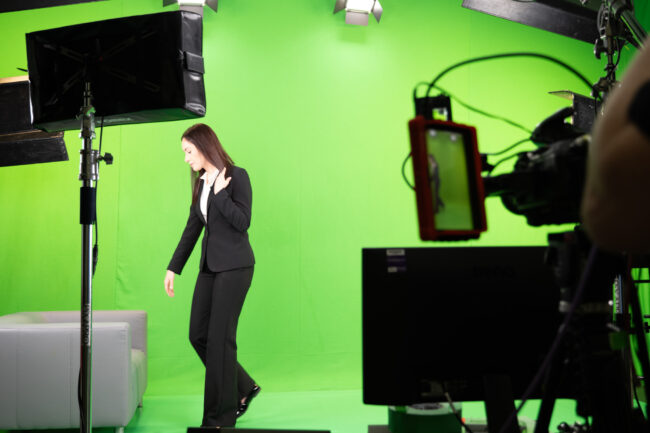
What is a Green Screen?
A green screen is a large neon green backdrop that is used in the background of shots to allow for digital manipulation in post-production. It is mainly used to create backdrops and environments that would otherwise be impossible to create due to certain restraints such as budget or location.
Green screen production is also known as chroma key compositing, which refers to a post-production technique that is used to composite multiple images together, using colours within the image.
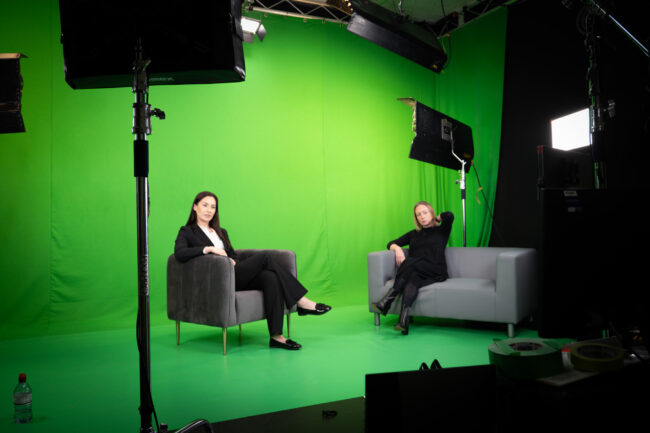
History of Green Screen Production
Green screen is most commonly associated with films, TV and music videos. However, VR technology is becoming increasingly valuable in livestreaming and virtual events.
The rise of green screen began in the 1980s when it became a mainstay within the film industry. Science fiction blockbuster hits, in particular, began to revolutionise these new methods of filmmaking, paving the way for modern production methods. The use of new LED screen technology really pushed the boundaries, allowing creators to produce visually stunning environments, which hadn’t previously been possible.
In the 2000s, as web conferencing tools started to emerge, green screen was recognised as a useful way to add visual interest to virtual presentations. During the pandemic, as virtual events started to become a key part of business communications, green screen production started to grow in popularity, helping to transform the quality of livestreams and virtual events.
What are the Benefits of Green Screen Production in Virtual Events?
Green screen production has revolutionised the way we create engaging content and virtual events. There are many benefits to using green screens including:
Creative Control – green screen production enables any background to be replaced with a virtual backdrop, allowing for unlimited creativity and flexibility.
Versatility – virtual environments can be fully customised to help bring your creative vision to life. It’s best practice to have the end product in mind when shooting, so you can frame and light your subject accordingly.
Cost Efficiency – using green screen production takes away the cost and logistical challenges associated with hiring a location for your shoot or virtual event.
Flexibility – green screen production is incredibly flexible, which makes it easier to adapt to any changing project requirements.
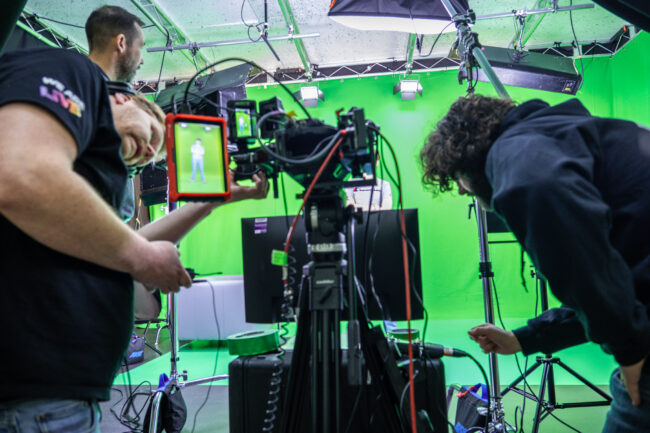
Safety and Practicality – a major upside of working with green screens is that it can be much safer than shooting on location. Creating content in a controlled virtual studio environment reduces the risk of things going wrong.
Eco-friendly Production – sustainability is an important consideration in the events industry. Using green screen technology means less travelling and transporting kit around, which can lead to a lower carbon footprint.
How we use Green Screens at Virtuopo
Our in-house virtual studio, Transmission Studio, is a vital resource, which enables us to deliver broadcast quality livestreams and engaging virtual events, using green screen capabilities.
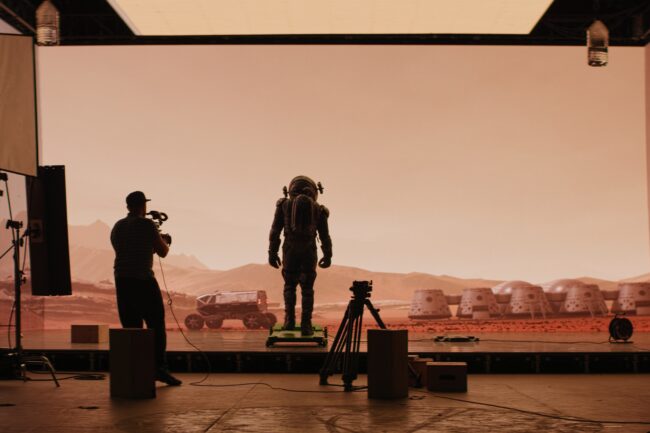
One of the first corporate projects we delivered from our connected virtual studio at Virtuopo HQ was a live and interactive Christmas event for one of the UK’s leading law firms. Our team delivered the 90-minute virtual event, which was designed to bring 200 colleagues together as part of the firm’s Christmas and end of year celebrations.
We brought a quiz host into the studio to present the interactive show against a green screen. The production team at Virtuopo then placed the host into a virtual Christmas themed environment as participants enjoyed the fun. Find out more here.
The virtual studio on-site at Virtuopo HQ is also regularly used in our video production work. We recently created a series of learning videos for the professional services sector, using green screen to film 17 high-quality role play videos to feature on the Business Development Academy Curriculum. You can read more about it here.

If you’re looking for green screen production without having to transport spokespeople into the studio, our production crew can take the technology to you. We’re experts at building pop-up broadcast studios, so whether you’re looking to livestream a high-end production from your company boardroom or have your CEO speak at a virtual conference without having to leave home, our team can help.
Our clients have seen first-hand just how much green screen technology can elevate the look and feel of livestreams, virtual events and video content. Virtual reality can really help to increase audience engagement and interaction, creating a more exciting overall event experience. You can find out more about different types of virtual events here.
At Virtuopo, we pride ourselves on delivering professional live-streaming and event management services. To find out more about the services we can provide, please contact us on 0151 662 0275 or email info@virtuopo.com.
Commonly Asked Question
- Does a green screen have to be green?
- No, a green screen could be any colour, but it’s best to use green as it is the furthest colour away from skin tone.
- What is a green screen made of?
- Green screen can be made out of any smooth material, commonly used materials include nylon or spandex. This is because they are smooth and can be stretched to eliminate wrinkles.
- Why do film makers use green screens?
- Film makers use green screens to deliver storytelling in a way that can’t be achieved through traditional methods. It allows them to create more ambitious special effects, backgrounds and environments.
- What type of clothes should presenters wear when working with green screen during a virtual event or livestream?
- The most obvious colour to avoid is green but presenters should also steer clear of white, which tends to reflect the green background under the bright studio lights. It’s best to stick to dark or neutral colours and avoid wearing anything that is patterned. Clothes made from shiny or reflective materials can also be problematic when presenting in front of a green screen so be sure to avoid sequins, silk and metallics when choosing an outfit.
